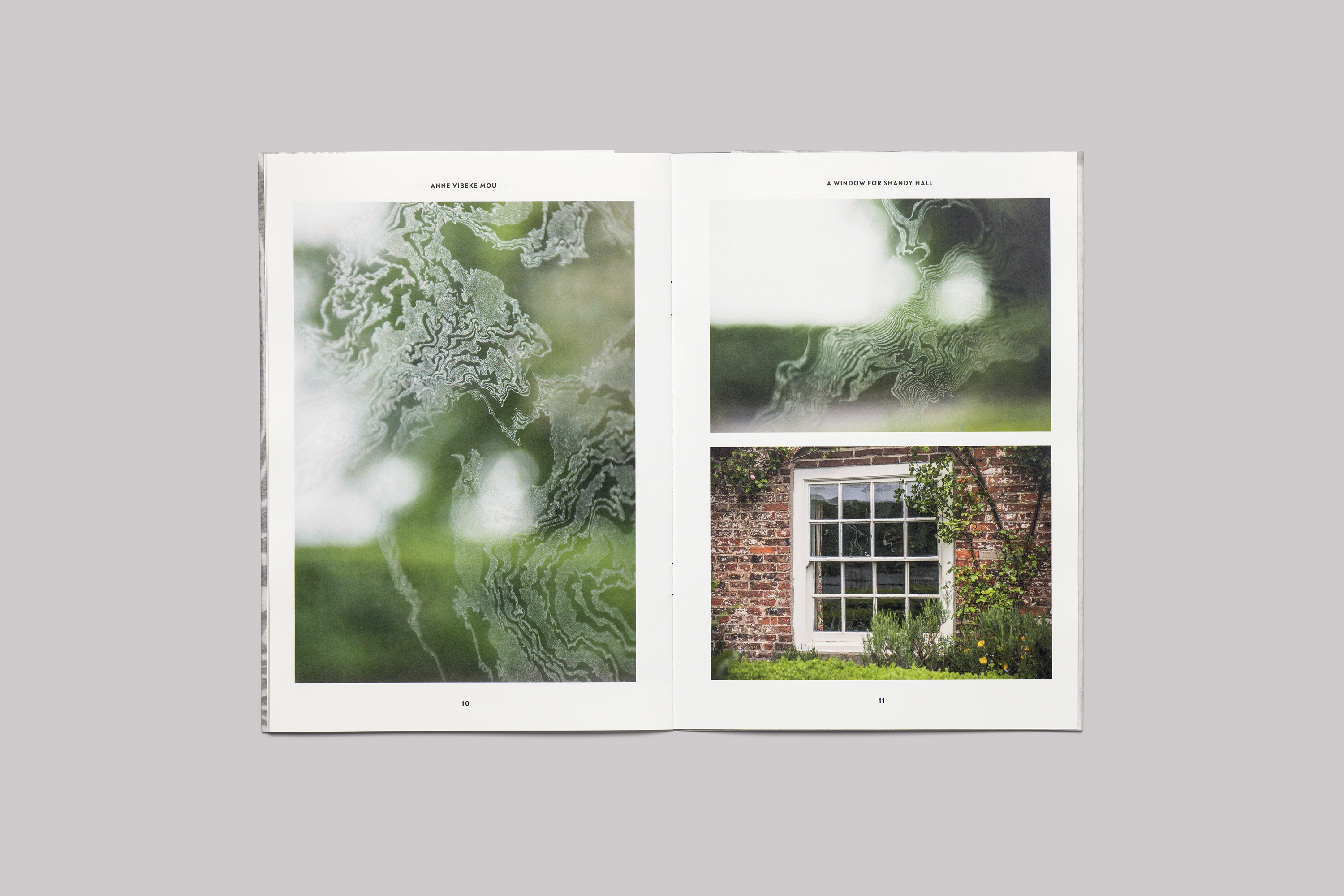Diamond Window
Patrick WildgustI am as happy as a prince, at Coxwould and I wish you could see in how princely a manner I live – ‘tis a land of plenty. I sit down to venison, fish and wild fowl, or a couple of fowls or ducks, with curds, and strawberries, and cream… with a clean cloth on my table – and a bottle of wine on my right hand to drink your health. (1)
Laurence Sterne wrote these words in a letter after he had been installed as incumbent of St Michael’s church and had taken up residence (at least for the summer months) at ‘The Parsonage’ – the building that soon became known as Shandy Hall. The house first appears as a drawing on a map dating from 1727 where it can be seen to be one of a row of mediaeval buildings that had been built on the north side of Thirsk Bank, opposite the church. Coxwould (or Coxwold) village was prosperous and Sterne added this third living to the others at Stillington and Sutton-on-the-Forest where he had been vicar since 1738.
His appointment to the living of Coxwold followed the publication of the first two volumes of The Life and Opinions of Tristram Shandy, Gentleman. Published at Sterne’s expense, the work was rapturously received in London by readers and reviewers – O! rare Tristram Shandy… thou wilt be read and admir’d’ (2) and the relatively unknown Yorkshire preacher rapidly achieved celebrity status. This was largely brought about by an extraordinary portrait by Joshua Reynolds (which can be seen in the National Portrait Gallery) and a lasting friendship with the actor/manager David Garrick.
Parsonage House (as it was known in the eighteenth century) where the new celebrity took up residence was already old. Built in 1430 the original structure was an asymmetric, timber-framed hall with a central hearth and a solar or meeting-room at the west end. Enlarged with cross-gables in the 1600’s to form a relatively large dwelling place, the central hall was divided creating top and bottom chambers. The downstairs room was panelled and remains very much as it was. Sterne found the atmosphere and the mood of the building conducive to writing, so much so that his friends re-named the building ‘Shandy Hall’ and that is where he began to work on Volume III – no longer to be self-published but to be printed by Dodsley of Pall Mall, with a frontispiece by William Hogarth. It is in this third volume that the reader is confronted with Sterne’s genius as he engineers the insertion of a marbled page into the body of the text to express the idea that his work contains that vital element – chance. Once the colours have been chosen, the shapes that are formed on both sides of page 169/170 are unpredictable – as a marbled page must be.
Where is this piece of writing going? Why are we considering marbling?
Anne Vibeke Mou has used the process, the art, the craft of marbling as the starting point for a new work for that panelled room in Shandy Hall. She has gone to the ancient art of Suminagashi marbling, which can be traced back to 12th century Japan. Suminagashi can be translated as ‘ink floating’ and is perhaps the most subtle form of marbling. Delicate swirls of pattern are created by blowing or fanning the ink on the surface of the water and are then ‘fixed’ onto equally delicate Japanese paper. The cloudlike patterns are suggestive and meditative. Mou has created sixteen pieces of suminagashi paper and used them as templates to guide her meticulous engraving of the patterns onto glass using a diamond point. Thousands of tiny impressions on the glass hold chance in suspension. The panels have been leaded by Barley Studio of York and placed and secured between the wooden glazing bars of the window.
The dedication required of the artist for this work is considerable – especially when the finished piece represents a writer, the place where he wrote and the remarkable novel that was written there. Diamond Window is now installed at the heart of Shandy Hall – the room where all the previous inhabitants over the last 250 years will have gazed through that very window to watch the day – to watch the clouds. A moment in the process of marbling captured in stillness; but the ever-changing quality of light through the glass makes it a living work, evoking the transience and passage of time.
Time wastes too fast: every letter I trace tells me with what rapidity Life follows my pen: the days and hours of it, more precious, my dear Jenny! than the rubies about thy neck, are flying over our heads like light clouds of a windy day, never to return more ––everything presses on ––whilst thou art twisting that lock, ––see! it grows grey; and every time I kiss thy hand to bid adieu, and every absence which follows it, are preludes to that eternal separation which we are shortly to make–– (3)








†
View Diamond Window ↗
Patrick Wildgust © June 2016 A Window for Shandy Hall published on the occasion of Diamond Window, June–September 2016, by Anne Vibeke Mou & The Laurence Sterne Trust. Design by Two.
†
(1) Private correspondence. 1767.
(2) London Magazine, 1760. February Ed. Reviewer unknown.
(3) Life and Opinions of Tristram Shandy, Gentleman. 1759. 1st Ed. Vol IX. Chapter 8.